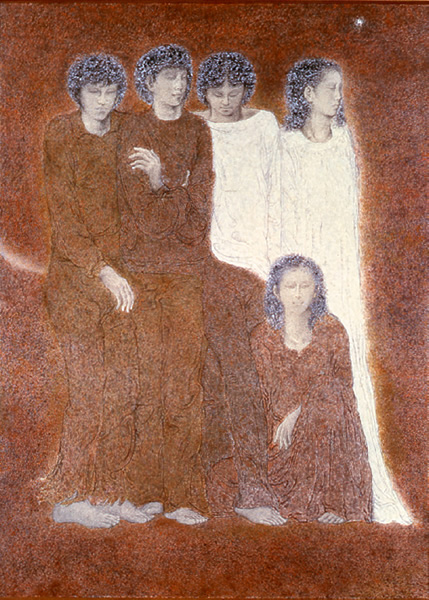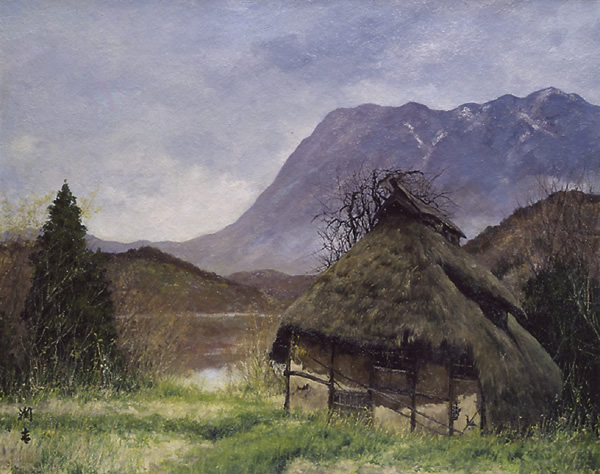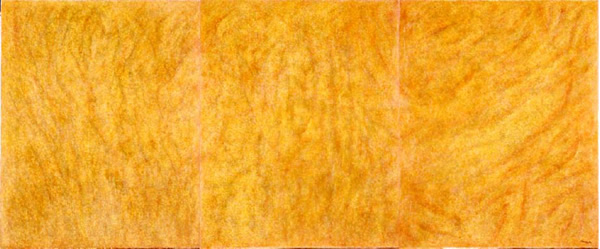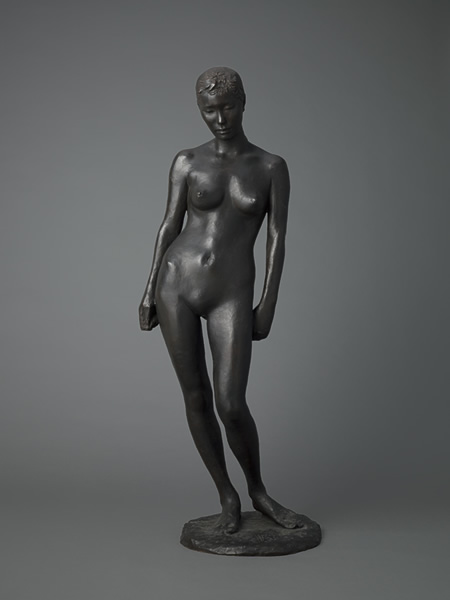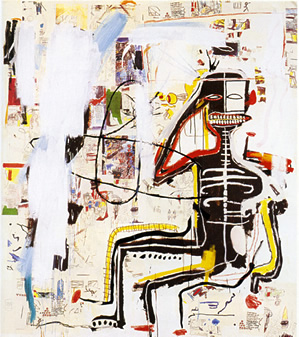Œuvres des créateurs liés à l’arrondissement de Setagaya
Après le Séisme de Kantō de 1923, et notamment avec l’ouverture des lignes de chemin de fer privées, de nombreuses personnes renommées se sont établies dans l’arrondissement de Setagaya, dont un grand nombre d’artistes. Bien qu’ils diffèrent quant à leur lieu d’origine et au style de leurs œuvres, ces créateurs se fréquentaient en tant que compagnons de l’art, ce qui aboutit bientôt à la création d’un climat culturel propre à Setagaya. Aujourd’hui encore, des artistes engagés dans divers domaines artistiques sont établis dans l’arrondissement de Setagaya, et le Musée a ouvert des annexes là où se trouvaient autrefois les ateliers des célèbres créateurs que furent Junkichi Mukai, Saburō Miyamoto et Taiji Kiyokawa.
Takayama Tatsuo (1912-2007)
‘Evening Star’
1983
Color painting on paper
Japanese-style painter born in Oita Prefecture. Moved to Setagaya’s Seijo area in 1951. While enrolled at the Tokyo School of Fine Arts (now Tokyo University of the Arts), he had his first painting accepted to the Imperial Art Academy Exhibition, and also began studying under the Japanese-style painter Eikyu Matsuoka. A biography of Paul Gauguin recommended to him by the painter Kyujin Yamamoto strongly influenced his approaches to both painting and life. His fantastical style expressed in restrained brush strokes conveys a deep spirituality. He was active in the Japan Fine Arts Exhibition, and produced the cover art for the leading monthly magazine “Bungeishunju” from January 1987 to December 1999.
Mukai Junkichi (1901-1995)
‘The Chikuma River after a Rain Storm’
1977
Oil on canvas
Oil painter born in Kyoto Prefecture. Moved to Setagaya’s Tsurumaki area in 1933. Enrolled at the Kansai Bijutsuin art academy after dropping out of the preparatory program of the Kyoto City School of Arts and Crafts. While living in Europe, he studied the essence of painting by copying Western masterpieces at the Louvre. Later, during World War II, he painted documentary war art. After the war, he founded the Kohdo-Bijutsu Association and continued painting, having chosen the rapidly disappearing folk dwellings of the Japanese countryside as his theme. His renovated housing and working quarters were donated to the local government and opened in 1993 as the Mukai Junkichi Annex.
Nambata Tatsuoki (1905-1997)
‘Record of Life 2’
1993
Oil on canvas,
Oil painter born in Hokkaido. Moved to Setagaya’s Kyodo area in 1936. Dropped out of Waseda University and studied at the Institute of the “Taiheiyogakai” Association. Under the influence of his mentor, the poet and sculptor Kotaro Takamura, he also developed an interest in literature, writing poems and essays for independent magazines. He focused his work on the “Kokugakai” and “Jiyu Bijutsuka” Associations, with a unique style of abstract painting consisting of fluid lines and immaterial figures. His son Fumio Nambata (1941-1974) was also a painter before dying in his thirties, and despite his short lifespan, he left behind many fantastical watercolors and sketches.
Sato Churyo (1912-2011)
‘Young Nude’
1974
Bronze
Sculptor born in Miyagi Prefecture. Moved to the Setagaya area (what is now Umegaoka) in 1940. Spent his youth in a Hokkaido coal-mining town. After failing admission to Hokkaido University’s School of Agriculture, he moved to Tokyo and studied at the Kawabata School of Painting before enrolling in the statue division of the Tokyo School of Fine Arts’ sculpture program. Following the end of World War II, he was detained in Siberia for three years. Upon returning to Japan, he set up a studio in Tokyo’s Yoyogi-Uehara neighborhood and became active in the “Shinseisaku” Association. In 1959, he moved his studio to Eifuku in the Suginami district. He is known for the beautifully sculpted forms of his female figures.
